-
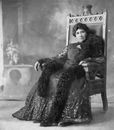
Incredible Hawaiian Women in History
These influential wāhine and their achievements in Hawaii's history paved the way for all Hawaiian women, as well as women around the Pacific! Source: Hawaii Magazine 1. Queen Emma Photo: Wikipedia In 1859, Queen Emma Kalanikaumakaʻamano Kaleleonālani Naʻea Rooke established Queen's Hospital to save the rapidly declining Native Hawaiian population, providing free services to those suffering from foreign-introduced illnesses like smallpox and influenza. In 1867, she founded The St. Andrew’s Priory School for Girls. Her talents extended into music as a vocalist, pianist and dancer and regarded for her skills as an equestrian. 2. Kaʻahumanu Photo: Wikipedia Kaʻahumanu, arguably the most influential woman in the course of Hawaiian history, was considered to be the most powerful woman in Hawaiian society as Kamehameha’s trusted adviser. She wielded her political power as his favorite wife and the kingdom's first kuhina nui (similar to a prime minister) to campaign for the rights of Native Hawaiian women. Under her counsel she staged a turning point in Hawaiian society: convincing the young King Kamehameha II to publicly eat at the same table with women (a major taboo), which in turn abolished the ancient kapu system that prohibited women from engaging in the same activities once only reserved for men. 3. Isabella Aiona Abbott Photo: University of Hawaii An ethnobotanist from Hāna on Maui, Isabella Kauakea Yau Yung Aiona Abbott became the first Native Hawaiian woman to receive a PhD in science. Of mixed Chinese and Hawaiian ancestry, Abbott learned about limu (Hawaiian algae) from her Hawaiian mother, setting the foundation for what would make her the leading expert on Pacific algae according to the academic record. She’s credited for discovering over 200 species, including a family of the Rhodomelaceae (red algae) family, a genus of which is named Abbottella, after her work in the field. In her career she wrote eight books, applying her native knowledge to author one on marine algae of California’s Monterey Peninsula, and more than 150 publications. 4. Rell Sunn Photo: Encyclopedia of Surfing/Jim Russi Known as the Queen of Mākaha, Rell Kapoliokaʻehukai Sunn was a world surfing champion and pioneer for women in the sport. With her cool and composed riding style, she shaped unity in the surf community by establishing a pro women's competitive surfing circuit for her peers and future generations. In 1975, she became Hawaiiʻs first female lifeguard presiding over her favorite beach on the North Shore. Sunn, affectionately called Aunty Rell, is also remembered for her long courageous battle with breast cancer. She was diagnosed in 1983 and given only a year to live. She overcame that prognosis by 15 years. She surfed every single day. 5. Patsy T. Mink Photo: U.S. Congress The first woman of color and the first Asian American elected to Congress, Patsy Takemoto Mink was a trailblazer in both local and national U.S. politics. With an impassioned nationally-televised speech she gave at the 1960 Democratic National Convention to 10,000 people, Mink is credited for persuading two-thirds of the Democratic party to continue their progressive stance on Civil Rights Issue, notably opposing motions to delete provisions such as a deadline to desegregate schools by 1963 and to make the Civil Rights Commission a permanent agency from the party's official platform. She also authored Title IX, a law which bans gender discrimination among federally-funded education programs.. In 1972, she also became the first Asian American woman to seek the presidential nomination of the Democratic Party. 6. Brook Lee Photo: Miss Universe Pageant Brook Mahealani Lee is the first Hawaiian, indigenous person and Asian American to win the Miss Universe crown. Her final competition answer during the Q&A portion is remembered for being one of the most memorable in beauty pageant history, responding that if she could do anything for a day without being confined to rules: “I would eat everything in the world.” 7. Aloha Dalire Dalire Kaneohe, known as Aloha Dalire, was named the first Miss Aloha Hula, then known as Miss Hula, at the inaugural Merrie Monarch Festival in 1971. The title is considered hula’s top solo wahine honor; each year at the festival held in Hilo, the best female hula dancers in the world compete for the prestigious award which crowns one as the most distinguished in the art form and cultural practice. She went on to become a prominent kumu hula (hula teacher). Her halau, Keolalaulani Halau ‘Olapa O Laka, competed at Merrie Monarch under her direct teachings for more than 40 years. Dalire was always a cause of excitement for the festival, many watching in anticipation to see what she’d bring to the kahiko(traditional) and ʻauna (modern) dance categories. She passed away at 64 in 2014, but her legacy lives on through her aloha spirit and lessons. 8. Michelle Wie Photo: Michelle Wie From Honolulu, Michelle Wie is the youngest winner of the U.S. Women’s Amateur Public LInks and the youngest to qualify for a LPGA Tour event. She turned a professional player at just 16 years old winning many high-profile and national endorsements. In 2014, she won her first major at the U.S. Women’s Open. 9. Jean King Photo: Mari Matsuda/Twitter Jean Sadako King was the first woman elected to be lieutenant governor of Hawaii from 1978 to 1982. She was considered a true pioneer for her achievements and as an advocate for affordable housing and the environment, particularly preserving Hawaii’s natural resources with the State Sunshine Law and the Shoreline Protection Act. She inspired many young women aspiring to work in politics with her public service. 10. Bernice Pauahi Bishop Photo: Kamehameha Schools Archives Princess Pauahi is one of Hawaii’s most important philanthropists. As an aliʻi(royal)—the last descendant of the Kamehameha line—she held the largest private landownership in the Islands, owning approximately 9% of Hawaii’s total acreage across the island chain. During her lifetime she saw the Native Hawaiian population dwindle from 124,000 to 44,000. Concerned for her people she focused her entire estate towards education. In 1887, as designated by her will, she established the Kamehameha Schools to bring educational opportunities to preserve, improve and perpetuate the well-being of future generations of Native Hawaiians, academically and culturally. Today her estate is worth about $11 billion. 11. Natasha Kanani Janine Kai Source: Instagram From Kahuku, Oahu, this professional soccer forward is also an Olympic gold medalist with a record-setting career. In the Western Athletic Conference (WAC), Kai became the first soccer player to be named both Freshman and Player of the Year in the same season. With 446 career shots, she also holds that career record and is second in goals (72) and points (162). Kai is also a role model for the LGBT community as an open lesbian in the sport (one of only three openly gay members on the 2008 USA Olympic Team). 12. Mazie Hirono Photo: U.S. Congress In 2013, Mazie Hirono became the first woman senator from Hawaii and the first Asian-American woman in the U.S. Senate, and currently the only person of Asian ancestry in the Senate currently. She’s the nation’s first Buddhist elected also. When she first immigrated with her family to Hawaii from Japan at the age of 7, she couldn’t read or speak English, and today serves on many committees championing women’s reproductive rights. 13. Alice Ball Photo: Wikipedia Born in Seattle in 1892, Alice Augusta Ball became both the first African-American and the first woman to graduate with a Master of Science degree in chemistry from the University of Hawaii in 1915. That year, she also became the first woman to teach chemistry at the school. In her research project at UH, Ball developed what was the most effective method of treatment for those suffering from Hansen’s Disease (leprosy) at the time. Her research was used as the basis for treating many patients at Kalaupapa, the community and colony on Molokai where those afflicted with the disease were quarantined. At just 24 years old, Ball suddenly passed away. While officially unknown, researchers suggest Ball’s tireless efforts investigating the properties of chaulmoogra oil to produce the treatment became a cause of exhaustion and could’ve attributed to her death. 14. Queen Liliʻuokalani Photo: Hawaii State Archives Liliʻuokalani was the last reigning monarch of the Kingdom of Hawaii. Upon taking the throne she wrote a new constitution that would restore veto power to the monarchy and enable economically disenfranchised Native Hawaiians and Asians to have voting rights and a voice in the political process. That constitution never became the law of the land as she was illegally overthrown by American and European businessman, supported by the U.S. military, who were threatened by these new governing views of the Queen. Imprisoned in her own palace, where she was locked away to its second-floor for nearly a year, Liliʻuokalani wrote her memoirs and composed mele (songs) such as “The Queen’s Prayer” and “Aloha ʻOe,” regarded famously today as a lament for the loss of Hawaiʻi nation. As a lone woman in the face this forceful removal from her rightful rule, she’s remembered for her resilience, belief in peaceful resistance and her attempts to re-empower the people of Hawaii over corporate interests. Throne-less, she continued to fight for the restoration of the Hawaiian Kingdom and revered by her people until her death in 1917. She was 79.
-
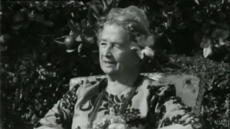
Aggie Greys
Take a look back at the iconic Aggie Greys hotel in Apia, as it launches as a Sheraton today! Aggie Grey, the original 'Bloody Mary' from the South Pacific movie of years ago, started a Pacific legacy in Samoa; and now her grandson is expanding that legacy into Tahiti.
-
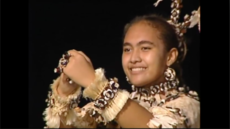
Wallis and Futuna
Check out this gorgeous dance from the beautiful islands of Wallis & Futuna! Wallis & Futuna - a French Island collectivity that lies halfway between Tonga, Tuvalu, Fiji and Samoa! This beautiful dance is performed by Tessa Felomaki (2003) of Hahake from the island of Wallis (Uvea).
-
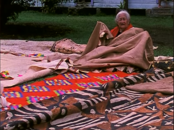
Kuo Hine 'E Hiapo - The Mulberry is White and Ready for Harvest Part 2
An amazing look into the work of Kautaha (Tongan Women's organisation) as they make one of the most important items in Tongan culture - the Ngatu Tonga. Made from the bark of the paper mulberry tree, the inner bark is beaten into fine sheets and painted using different designs, and after centuries of use, it has literally become the fabric of Tongan society.
-
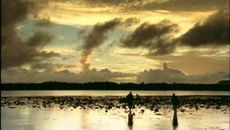
Kau Fangota - Gleaners of the Sea Part 2
Check out Part 2 of this extraordinary look at the kau fangota - the women gleaners of the sea. The women harvest all edible sea animals and plantsthat can be shared among their families or sold to the public. Depending on village resources, women become skilledin gathering specific foods.
-
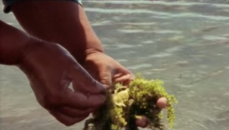
Kau Fangota - Gleaners of the Sea Part 1
The work of kau fangota, the gleaners of the sea, those who harvest seaweed and shellfish at low tides has been historically the work of women. Their knowledge of mat weaving, tapa cloth making, healing the sick and gathering food are vital to the existence of the family.
-
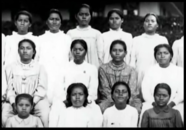
Marshall Islands 1857
The arrival of the white missionary on the Island of Ebon and on to the other Islands of Marshall Islands in the year 1857. Check out some rare images on the history of the colonisation of the Marshall Islands.
-
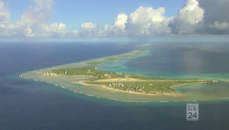
Marshall Islands, Ebeye (Atolls) Part 2
Take a look into the American base situated in one of the most idyllic Pacific nations in the world - the Kwajalein Island just north of the equator in the western Pacific Foreign Correspondent gain rare access to a top-secret, Club Med style base in the vast Pacific which can 'see' everything that moves across a third of the globe and deep into space. But just across the lagoon lies a squalid third world. As it happens nuclear testing, for real, had a long and tragic history only a few hundred kilometres from Kwajalein. Bikini Atoll was the site of a series of extraordinary atomic tests conducted by the United States in 1946. But traditional landowners of Kwajalein Atoll say US compensation is inadequate and their people shouldn't have to continue to live in slums on the island of Ebeye, where 15,000 people are crammed into a narrow strip of coral and sand, smaller than a golf course.
-
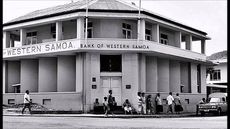
Samoa in 1971
Take a walk down memory lane with this beautiful look at Samoa over 40 years ago! Compiled by Harry Lee with images captured by Dr. Roland Seib back in 1971, it is a gorgeous reminder of what Samoa looked like in the early 70s. Photos in this Video are: 01. Apia Harbour. 02. Department of Lands, Survey & Land Registry Office. 03. Immigration Office. 04. Old Fire Brigade & Old Bus Terminal. 05. Old Market (Makeki Kuai) 06. Tivoli Arcade & Retail Store. 07. Tivoli Theatre. 08. Forsgren Studio (Tau'ese). 09. Emelio Fabricius Store (Matafele). 10. S. V. MacKenzie (Matafele). 11. Bank of Western Samoa (Matafele). 12. Chief Post Office, Apia. 13. Burns Philp (South Sea) Co. Ltd. 14. Traffic Officers. 15. O. F. Nelson Wholesale Dept. 16. Burns Philp Cobra Store (Savalalo). 17. Maretana. 18. W.S.T.E.C. (Sogi). 19. Casino Hotel (Sogi).
-
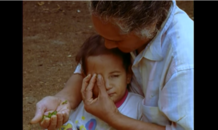
Kau Faito'o - Traditional Healers of Tonga Part 2
In spite of Western influences and modern medicine, traditional Tongan healers, or Kau Faito'o, continue to play an integral part in every-day Tongan society. Check out how some of the healers continue to carry on their legacies as healers in the village, from helping women with their pre-natal care, as well as using natural ingredients to make homemade remedies and massage therapies.
-
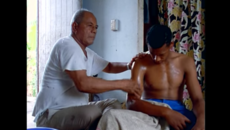
Kau Faito'o - Traditional Healers of Tonga Part 1
In spite of Western influences and modern medicine, traditional Tongan healers, or Kau Faito'o, continue to play an integral part in every-day Tongan society. Check out how some of the healers continue to carry on their legacies as healers in the village, from helping women with their pre-natal care, as well as using natural ingredients to make homemade remedies and massage therapies.
-

Polynesian Panthers
Check out this look back at the Polynesian Panthers Movement that was inspired by the Black Panther movement in America! We check out some of the history behind how the movement started here in NZ, and how their pioneering work has helped pave the way for future generations. In the 1950s thousands of Pacific Islanders came to Aotearoa to meet a labour shortage. They faced racism, and in the 1970s, notorious dawn raids by police. In 1971 a group of young gang members and students set up the Polynesian Panthers to stand up for the rights of the Pasifika community. They ran food co-ops, homework centres, and lobbied for support services. In this Dan Salmon-directed documentary, presenter Nevak Rogers explores the inspirations, events (Bastion Point, Springbok Tour) and legacy of the movement co-founded by her uncle Will 'llolahia. PART 1 {{18202}} PART 2 {{18203}} PART 3 {{18204}} PART 4 {{18205}}
-
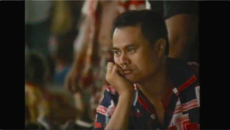
Cyclone Ofa
Take a step back in time - all the way back to 1990 when Tropical Cyclone Ofa devasted the Pacific. Ofa first hit Tuvalu before moving on to Western Samoa and American Samoa, Tokelau, Niue and Tonga. The worst effects were recorded in Samoa, where seven people were killed. Roughly 200 people were evacuated, and 10 to 20 others were injured through the islands.
-
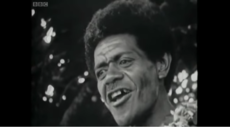
A Journey through the South Seas - Outer Islands of Fiji (1960)
Check out this awesome footage of acclaimed British broadcaster and naturalist David Attenborough as he visits the outer islands Fiji - back in 1960! Taking a look back in time at the unique cultural practices - including the unique calling of the Shark and Turtle on the island of Koro and Vanua Balavu fishing rituals! Source: BBC World
-
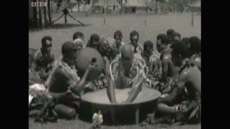
A Journey through the South Seas- Firewalkers of Fiji (1960)
Check out this awesome footage of acclaimed British broadcaster and naturalist David Attenborough as he visits Fiji - back in 1960! Taking a look back in time at the unique cultural practices of the brothers and sisters from the beautiful islands of Fiji!
-
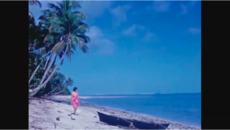
The Cook Islands 1952
Check out this awesome archive footage of life in the beautiful Cook Islands! Mostly shot around Rarotonga it features many places and customs including fishing and dancing. The film also shows how easy it is to get from New Zealand to the Cook Islands - even back then!
-
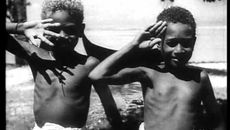
Army and Airforce - Daily life in the Solomon Islands 1943
Check out this throw back of NZ soldiers as they go about their day-to-day lives in the Solomon Islands!
-

Army and Airforce - Daily life in the Solomon Islands 1943
Check out this throw back of NZ soldiers as they go about their day-to-day lives in the Solomon Islands!
-
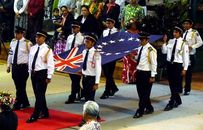
The Cook Islands Looks Ahead (1965)
Take a trip down memory lane as we look back at the Cook Islands in 1965! A survey of Cook Islands preparations in 1965 for internal self-government. Developments in industry, education and health services. The opening of the first Assembly under a new Constitution and the following celebrations. Source: Archives NZ
-

The Cook Islands Looks Ahead (1965)
Take a trip down memory lane as we look back at the Cook Islands in 1965! A survey of Cook Islands preparations in 1965 for internal self-government. Developments in industry, education and health services. The opening of the first Assembly under a new Constitution and the following celebrations. Source: Archives NZ
-
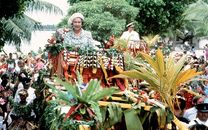
The First Royal Visit to Tuvalu 1982
Check out this archive of the Royal Visit to Tuvalu by Queen Elizabeth II and Prince Philip in October, 1982. The first ever visit by the monarchs to the small island nation, the Tuvaluan people put on a glorious welcome fit for the Royals! A clip from the documentary: 'Change in Tuvalu'
-
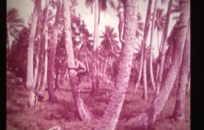
The story of Polynesian People today
The New Zealand National Film Unit presents The Story of a Polynesian People Today Documentary about the Cook Islands made around the time of the nuclear weapon tests? digitised from a 16mm Steenbeck.
-
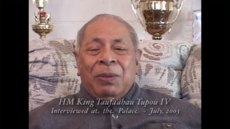
Tuku Fonua
Check out this awesome documentary about the unique culture and customs of the last remaining Monarchy in the Pacific! In the early 1800's the first king of a united Tonga, King Siaosi Tupou I, celebrated the "giving of Tonga to God" in the northern Tongan islands of Vava'u at a place forever known as Pouono. This film chronicles the event and its significance as described by several renowned scholars of ancient Tongan and Polynesian history. It is a story of great devotion and faith in the face of European colonisation in the Pacific.
-
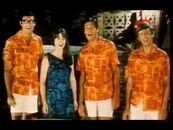
The Seekers singing Isa Lei
Check out this beautiful rendition of the Fijian classic Isa Lei by The Seekers! The popular band from the 60s were the first Australian po-band to make it big in America and the UK! Check out their awesome version of the Fijian farewell song! Not bad on the pronunciation either!
-
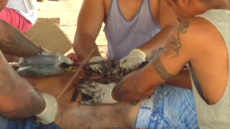
Becoming Samoan
Check out this awesome short film by Crystal Vaega, following Sonny Natanielu and his journey back to Samoa to get his Tatau! Go along with Sonny as he rediscovers his culture; a dilemma New Zealand Pacific people fall victim to very often. Everyone has a story, and this is one of many.
-
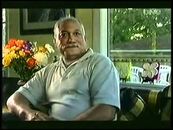
Dawn Raids
In the early 1960's, New Zealand was considered to be the land of 'Milk and Honey' for many Pacific families looking to work and make money for their families back in their homelands. But unfortunately after the New Zealand economy took a nosedive, Pacific people found themselves arrested and deported back to their islands by the truckload. Check out this documentary on one of the darkest days of New Zealand history.
-
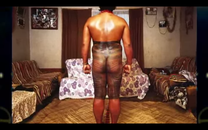
Traditional Samoan Tattooing tools
It's often a painful experience getting a tattoo; whether it's done traditionally or non-traditionally. Te Papa curator Sean Mallon explains why it is so important in the Samoan culture to get a tattoo the traditional way using bone chisels.
-
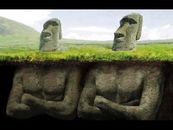
Secrets of Easter Island
Easter Island (Rapa Nui: Rapa Nui, Spanish: Isla de Pascua) is a Polynesian island in the southeastern Pacific Ocean, at the south-easternmost point of the Polynesian Triangle. Easter Island is famous for its 887 extant monumental statues, called moai, created by the early Rapa Nui people. In 1995, UNESCO named Easter Island a World Heritage Site, with much of the island protected within Rapa Nui National Park.
-

Alesana Tuilagi - "The SAMOAN Bulldozer"
The Pacific Islands are reknowned for our contribution to the sporting world, and Alesana Tuilagi is no exception! We also have Brian 'The Chiropractor" Lima, David " The Terminator" Tua, Dwayne "The Rock" Johnson and just to name a few. Check out how his name came to be, and the awesome power of the 'Bulldozer'!
-
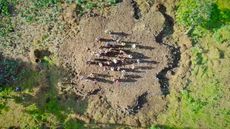
Pulemelei, Samoa's Ancient Pyramid
Check out Pulemelei, the largest stone structure in the Pacific. It is bigger than any Heiau in Hawaii and the top is about half the size of a football field. Located on Letolo Plantation in the Palauli district, at the east end of Savai'i, it is so ancient that people aren't sure what it is anymore. *Video narrated in Samoan
-
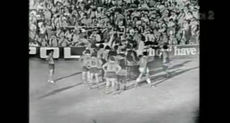
Tonga beats the Wallabies 1973
An unknown Tongan Rugby Union Team toured Australia in 1973 to play two tests with the Wallabies of Australia. The first test, Tonga lost but it was a close score. The second test in Ballymore stadium in Brisbane Queensland proved otherwise. Tonga won the match 16-11 and it went down as one of Australia's worse loss in Rugby history to a small minnow nation like Tonga. The irony of this was Toutai Kefu's father played in that team and his son will one day play for Australia and win a Rugby Union World Cup for Australia.
-
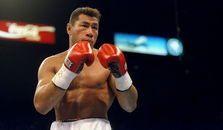
James Thunder - Pure Samoan Power
Check out Jimmy Thunder and the knockout known as one of the fastest in Boxing History! Jimmy Thunder born February 3, 1966 in Upolu, Samoa as James Peau, is a former Samoan boxer with a whole heap of power behind that hook! He can thank all the sapasui and taro for that - Chiiiiooooo! Check out his destroying right hand leaving carnage in his wake at the Edinburgh 1986 Commonwealth Games. Peau produced a stunning KO in the heavyweight final to win Gold! {{16388}}
-
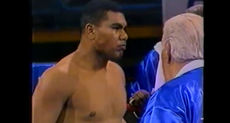
Rare fight between David Tua and Mike Acey
Check out David 'The Terminator' Tua in one of his earlier matches that made him a force to be reckoned with! In 1993 at the age of 21, David Tua took on Mike Acey in the International Heavyweight division - see the beginnings of the champion from South Auckland!
-
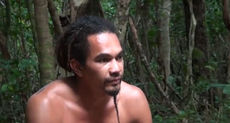
The Story of the Fo'ui Tree - Tonga
A little history lesson on the Fo'ui Tree and the tomb of Queen Talafaiva on Euakafa Island, Tonga, as told by 'Ofa, the kayak guide. Read more about this myth from the Kingdom of Tonga here!
-
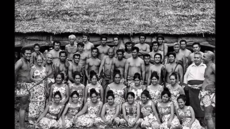
RARE FOOTAGE - Western Samoa Teacher's Group 1976
The Western Samoa Cultural Group was first formed in 1971 to perform in the First South Pacific Festival of Arts which was held in Suva, Fiji (1972). This first group was made up of all teachers. The selection of performers: The Teachers' Training College at Malifa has always played a prominent part in the propagation of the arts of dancing and craftmaking. Many students of the college therefore graduate highly proficient in these fields. Hence, it was relatively a simple task to recruit the appropriate performers from teachers for such an important event as an arts festival. After the festival however, the realisation grew that much of the traditional movements of dancing and traditional compositions in songs are in danger of being totally eradicated or if modified, become distorted and superficial as there was no conscious attempt to retain these in a relatively pure form. So the group decided to remain in existence. This group laid the foundation and the standard that all Samoan cultural groups are measured by. Considered by Samoan cultural experts as the greatest Samoan cultural group ever assembled in the history of Samoa. Some of the members are leading scholars and experts in language, culture and the arts. Since its inception, the Organisation Production and Direction have been provided under the ample guises of Aiono Keneti Sataraka the dynamic personality behind the Western Samoa Culture Group. (Above excerpt was taken from the official government program published for the National Festival group, March 6-13, 1976)
-
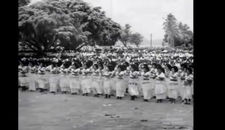
Lakalaka Lakeba (Teu Tulou Moe) 1953
The Fijian community honour the Queen during her trip in 1953 by performing the traditional "lakalaka". The Lakalaka is a Laun meke that orignates from Tonga. It is a group performance where both the men and women dance side by side with different actions. The women have very graceful hand movements while the men do alot of turning, kneeling and head and arm movements.
-
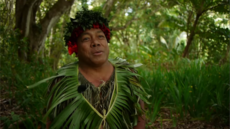
Chief Sielu Avea, Ambassador of Polynesia
Hawai'i is a true melting pot, and you meet people from all over the world here. But few have a biography as colorful, diverse and remarkable as the subject of this story. Meet Chief Sielu Avea, an "Ambassador of Polynesia" who shares the culture and traditions of his home at venues throughout O'ahu.
-
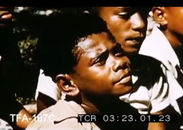
South Pacific Island Children - Life In Fiji, 1951
Watch this educational film about the life of children in the Fiji Islands in the 1950s! There were no video games, iphones or technology back then. For fun you would go swimming, climb trees, go fishing, help your mothers weave mats and dads build houses. Times have truly changed!
-
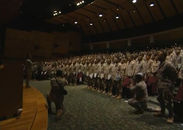
Samoan Hymn
Treat to your ears to this beautiful Samoan hymn sung by the 100th Battalion, 442d Infantry in 2004 during a US Naturalization Ceremony for 130 soldiers. 120 of the soldiers were from American Samoa. The 100-442 INF has 2 companies based in American Samoa.
-
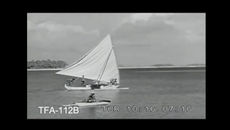
Marshall Islands 1949
Watch this beautiful film about life on the small island of Likiep in the Marshall Islands in Micronesia! Likiep Atoll is a coral atoll of 65 islands in the Pacific Ocean, and forms a legislative district of the Ratak Chain of the Marshall Islands. It is located approximately 55 kilometres northwest of Wotje. Its total land area is only 10.26 square kilometres (3.96 sq mi), but that encloses a deep central lagoon of 424 square kilometres (164 sq mi). Likiep Atoll also possesses the Marshall Islands highest point, an unnamed knoll 10 metres (33 ft) above sea level.
